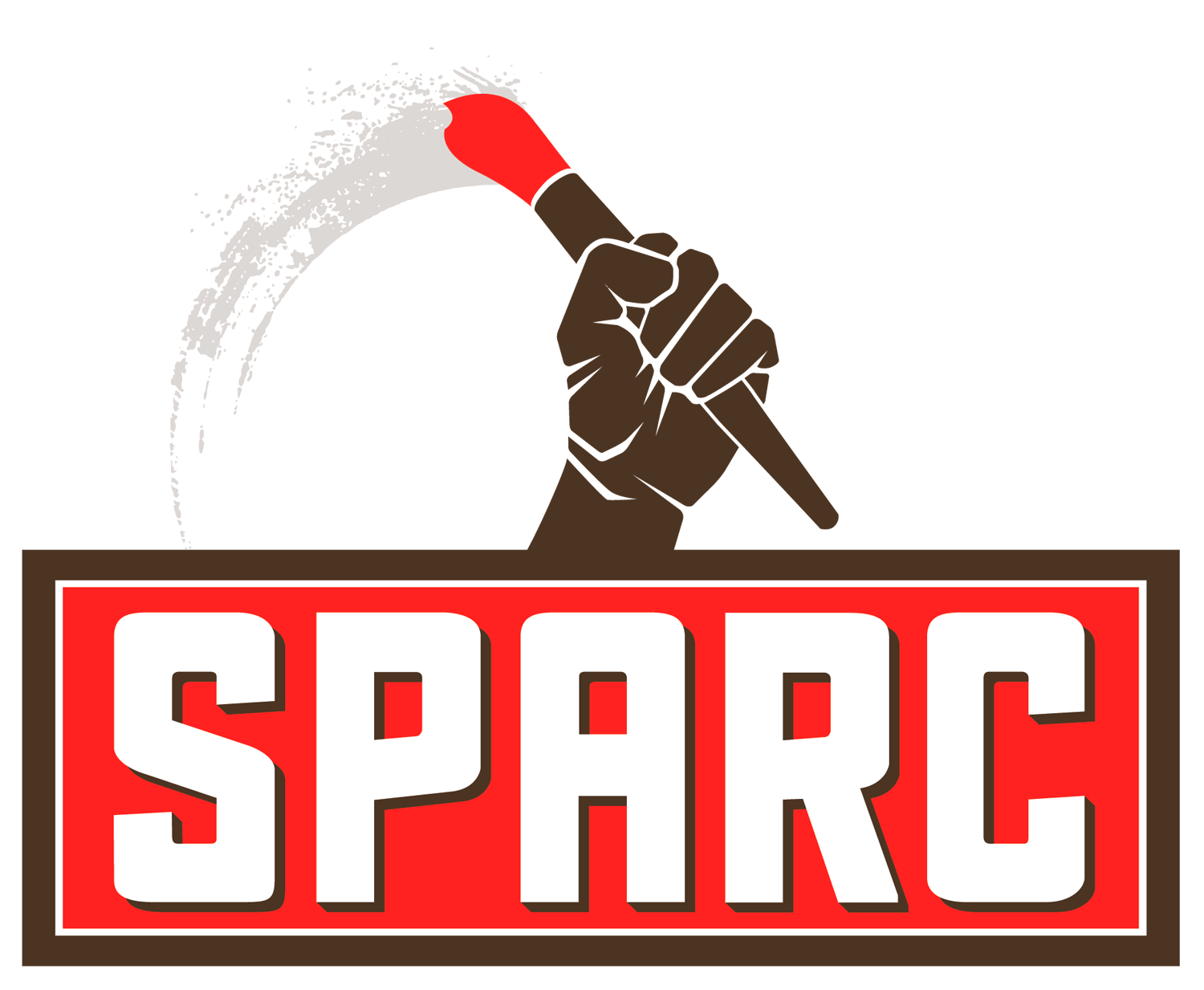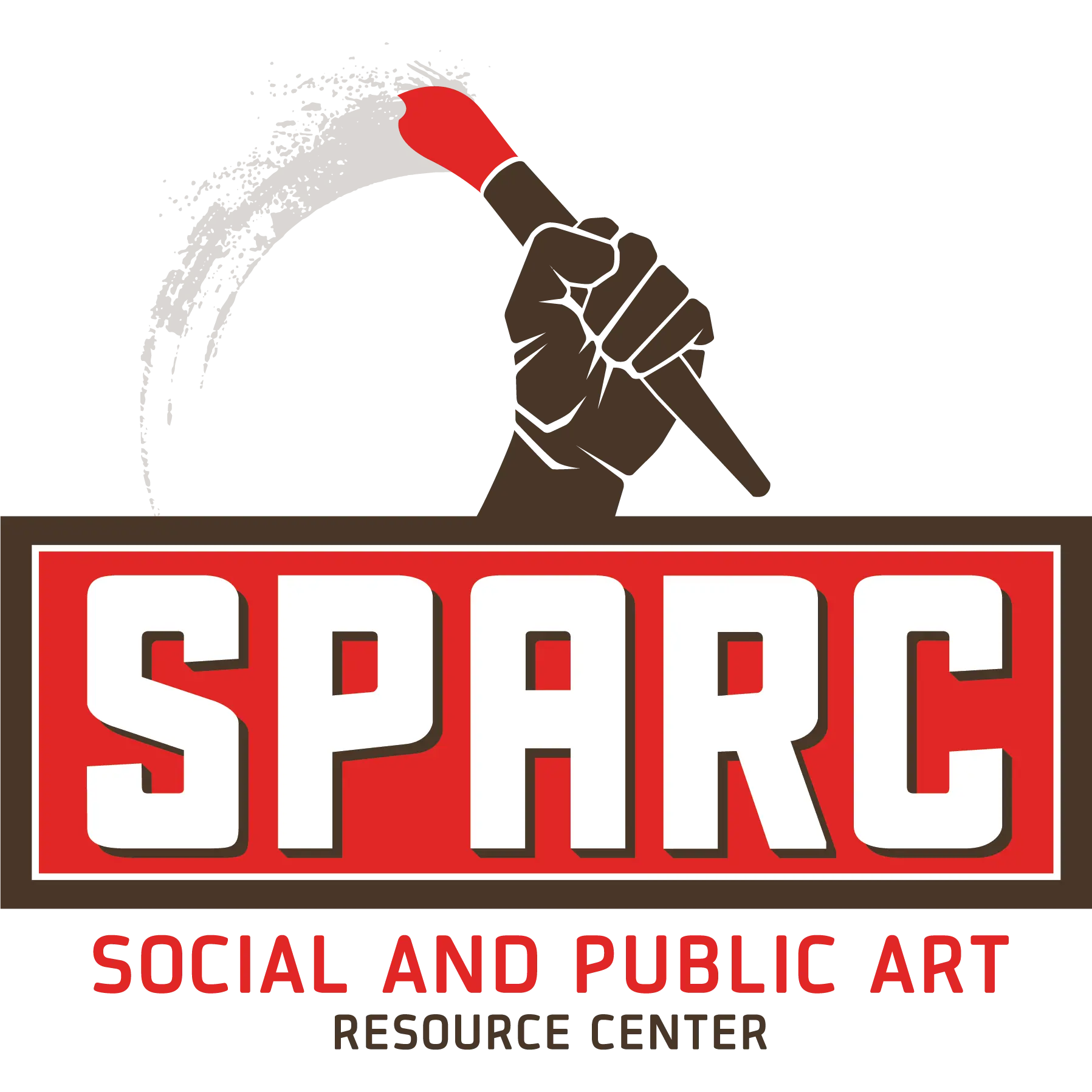THE EMANCIPATION PROJECT: Realizing Agency and Identity
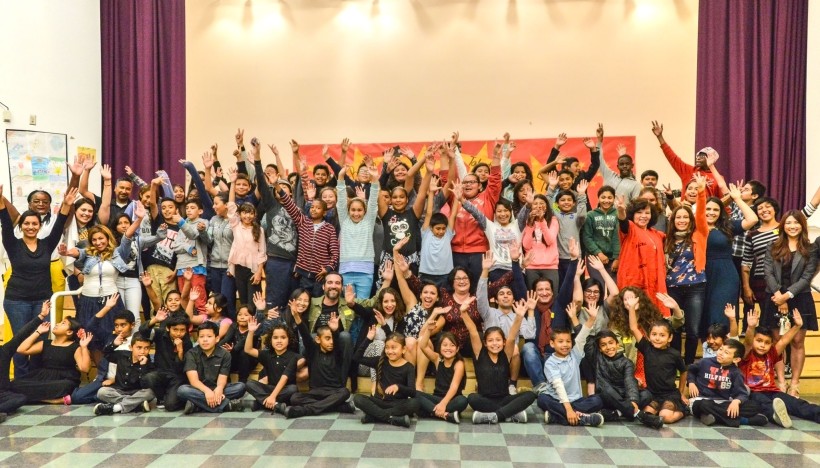
For graduating UCLA senior Aaron Rozzi, the decision to enroll for Professor Judy Baca’s “Beyond Mexican Mural: Beginning Muralism and Community Laboratory” class was a hasty, last minute one. “I found out through an email from my Art History professor. The moment I got the email, I was like, ‘I have to take this class.’” Rozzi admits that he didn’t know what to expect. As an Art History major, he was interested in learning about mural techniques.
But just as quickly as Rozzi decided to sign up for the class, he was immediately taken by surprise, and placed outside of his comfort zone. In the second half of the class—the Emancipation Project at the Judy Baca Arts Academy (JBAA) in partnership with UCLA@SPARC’s Digital Mural Lab—Rozzi mentored three 6th grade students at the Judy Baca Arts Academy in Watts, California in envisioning and implementing these students’ self-portraits, from start to finish.
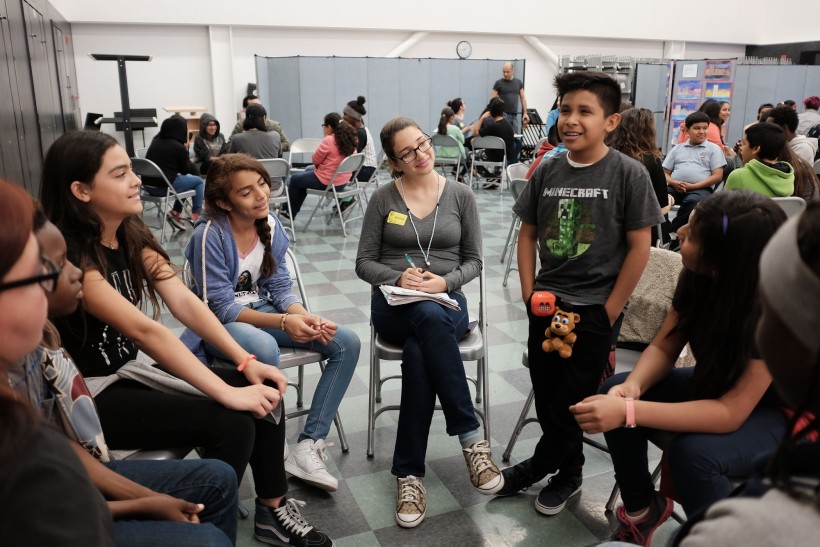
“I wasn’t really sure what they meant [in the e-mail] about working with children—I didn’t think it was gonna be to the extent that we were doing so,” Rozzi says. “The first day we started working with students was very nerve wracking.” Although Rozzi has experience working with high school students, he says that he’s not a “professional” painter, describing his initial feelings as “a recipe for a lot of anxiety.”
But Rozzi gradually became more comfortable. And now that the project has completed its third year, he says that he would do it all again. “It made me realize that I might want to work with students, with art, or just anything with education.”
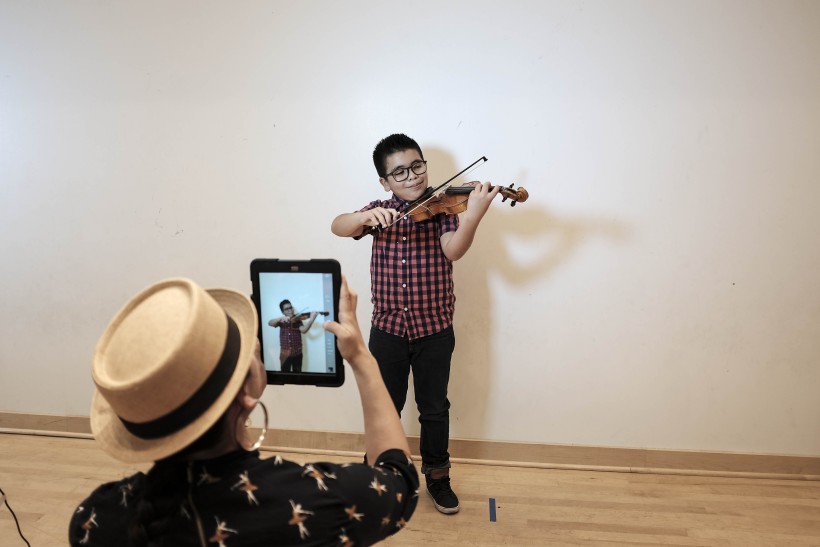
Through the Emancipation Project, UCLA students like Rozzi are given the opportunity to mentor underserved youth at the Judy Baca Arts Academy, and assist them in creating their very own self-portraits that are then digitally installed in the form of a mural at the campus cafeteria. Students and mentors work on iPads using editing programs, Adobe Photoshop and Sketch, and then learn painting techniques to produce the sixth graders’ portraits. Once the portraits are done, the students share them with family and friends at an end-of-the-year exhibit.
The UCLA mentors worked closely with JBAA students, ensuring that the students’ portraits were exactly how the students envisioned their ideal or possible selves, making sure to get every detail just right. It’s important for mentors to provide encouragement and support to their students, as this is oftentimes a new process that is also very personal. “There was a student who was really frustrated about his portrait’s background color and he was mixing all this paint,” Aaron remembers. “So I said, ‘Let’s start from scratch, I think I know how we can do this.’ And we managed to get the exact color he wanted.”
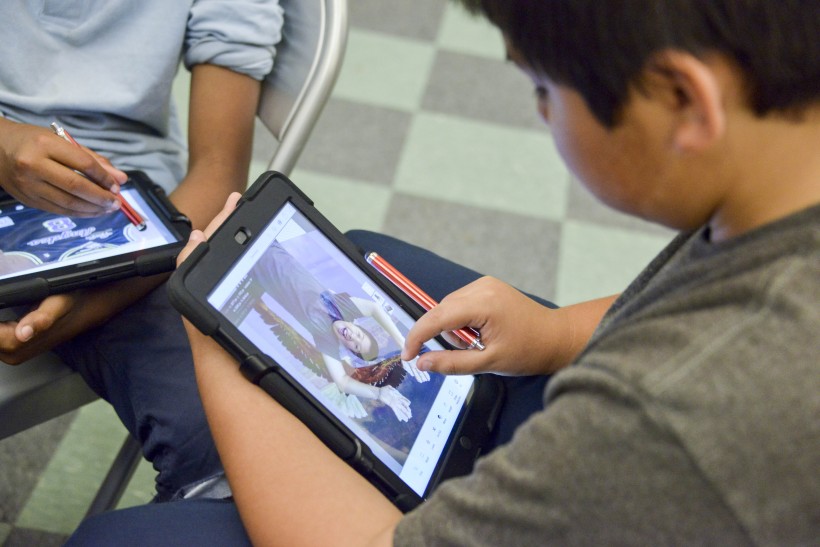
Through this type of careful and attentive mentorship, the UCLA mentors guided the JBAA students in expressing their identities through art, of which the sixth graders were ultimately in charge. In this way, the students were liberated—or, “emancipated”—to fulfill and foster their dreaming capacities of who they were and who they could become.
Importantly, the Emancipation Project enables the exploration of cultural and social identity to youth whose daily lives are affected by socioeconomic disadvantages. “We got to work with students who weren’t very privileged,” Rozzi says. “[The program gave] these children access to quality supplies and technology. It was cool to be able to show them anything’s possible.”
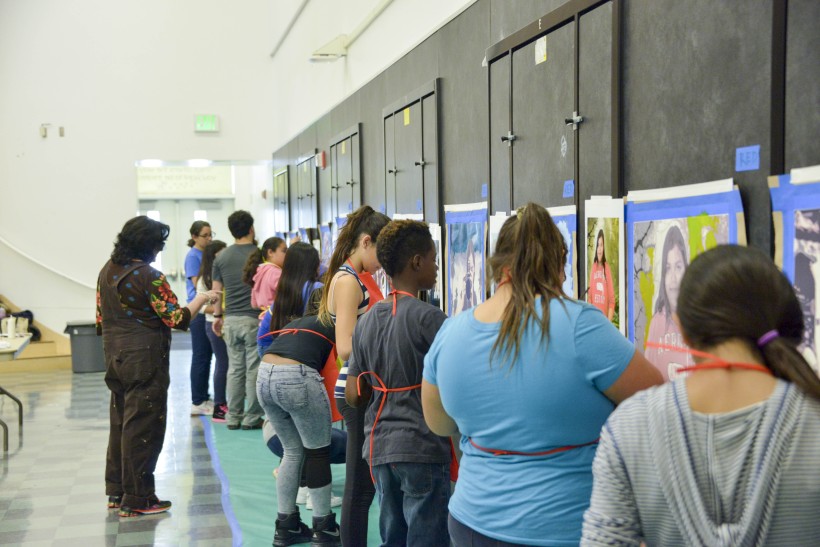
“To have their portrait on the wall,” Rozzi continues, “the students felt like they were leaving their legacy at the school. Seeing themselves [in the portraits] helped them decide what they wanted to pursue at this moment in their lives. It gives them goals and prospects.”
For some students, the portraits were a platform to see their identities come to life, a way for their ideal, dreamed selves to become their actual selves. “A lot of these students are already so sure of themselves,” says Rozzi. “There was a student who wore a LEGO shirt in his portrait. He said, ‘I don’t want that to say LEGO—I want it to say LGBT.’ And so he replaced ‘LEGO’ with ‘LGBT’.”

For Rozzi, the Emancipation Project liberated him to learn more about his cultural background. “I had an outlet to express my insecurities about my Mexican heritage or connection to it. It gave me an outlet to feel like I was worthy of [my heritage]. I am what I am.”
And hopefully, for years to come, the Emancipation Project will continue to propel children and college students on similar journeys of exploration, discovery, and creation of identity—all that they are and all that they dream to be.
Learn more about the Emancipation Project at the Judy Baca Arts Academy and the UCLA@SPARC Digital Mural Lab.
Watch this year’s Emancipation Project video covered by UCLA. Watch Emancipation Project’s second year video on YouTube.
Written by: Nicole Arca, SPARC Getty Intern 2016 | UC Berkeley Alumni, Media Studies
